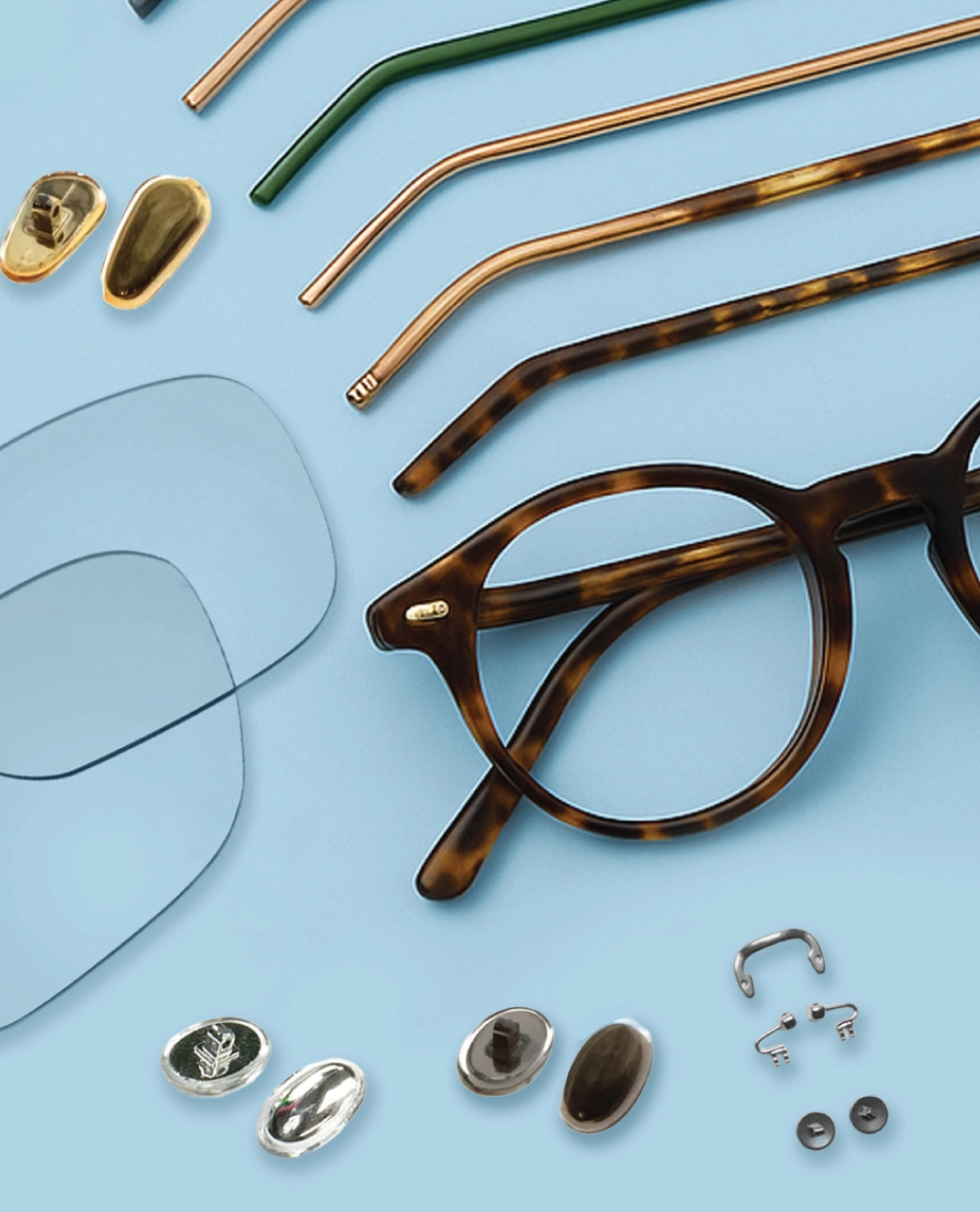Eyeglasses are more than simple accessories – they’re precision devices designed to correct vision and provide comfort. Each component plays a role in how the glasses fit, how long they last and how well they work. Knowing the “anatomy” of your glasses helps you describe problems accurately when talking to an optician, evaluate quality, and understand maintenance and repair options. Whether you’re a first‑time wearer or an eyewear enthusiast, understanding these details can extend the life of your glasses and protect your vision.
The Essential Parts of Eyeglasses
Eyeglasses may look simple at first glance, but they’re composed of several pieces working in harmony.
The American Academy of Ophthalmology identifies nine essential parts.
Below is a quick overview.
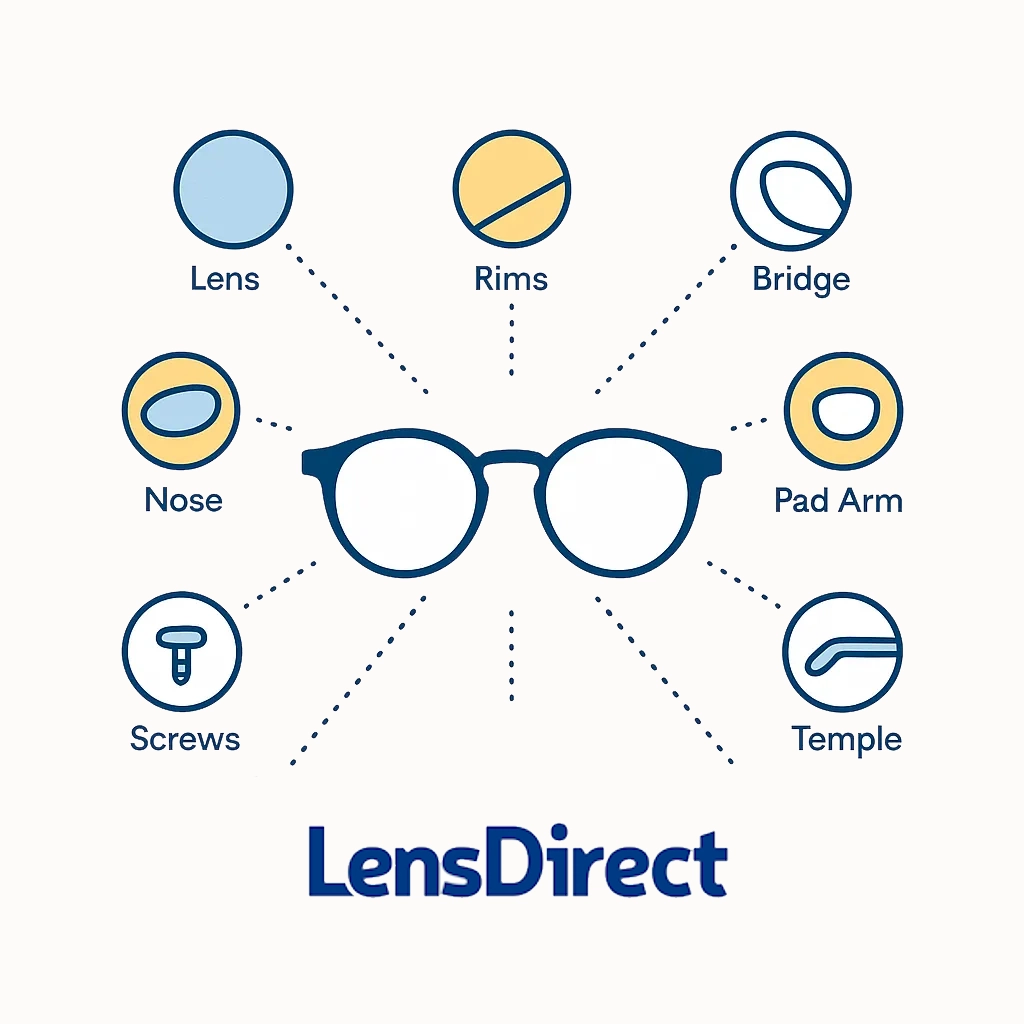
Main Components
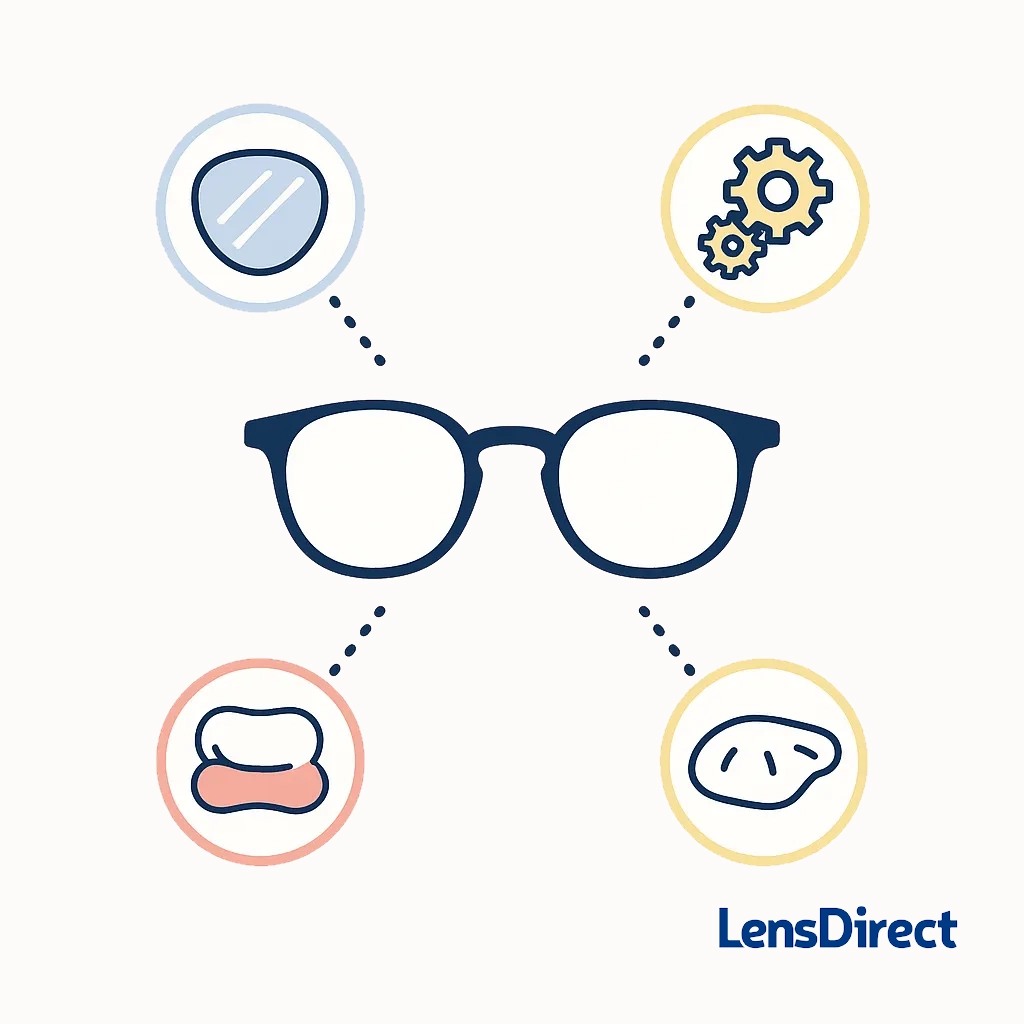
Rims (eye wires) – Hold the lenses in place and give the frames their shape.
Lenses – Transparent pieces of glass or plastic that correct your vision. The material and prescription determine their thickness and weight.
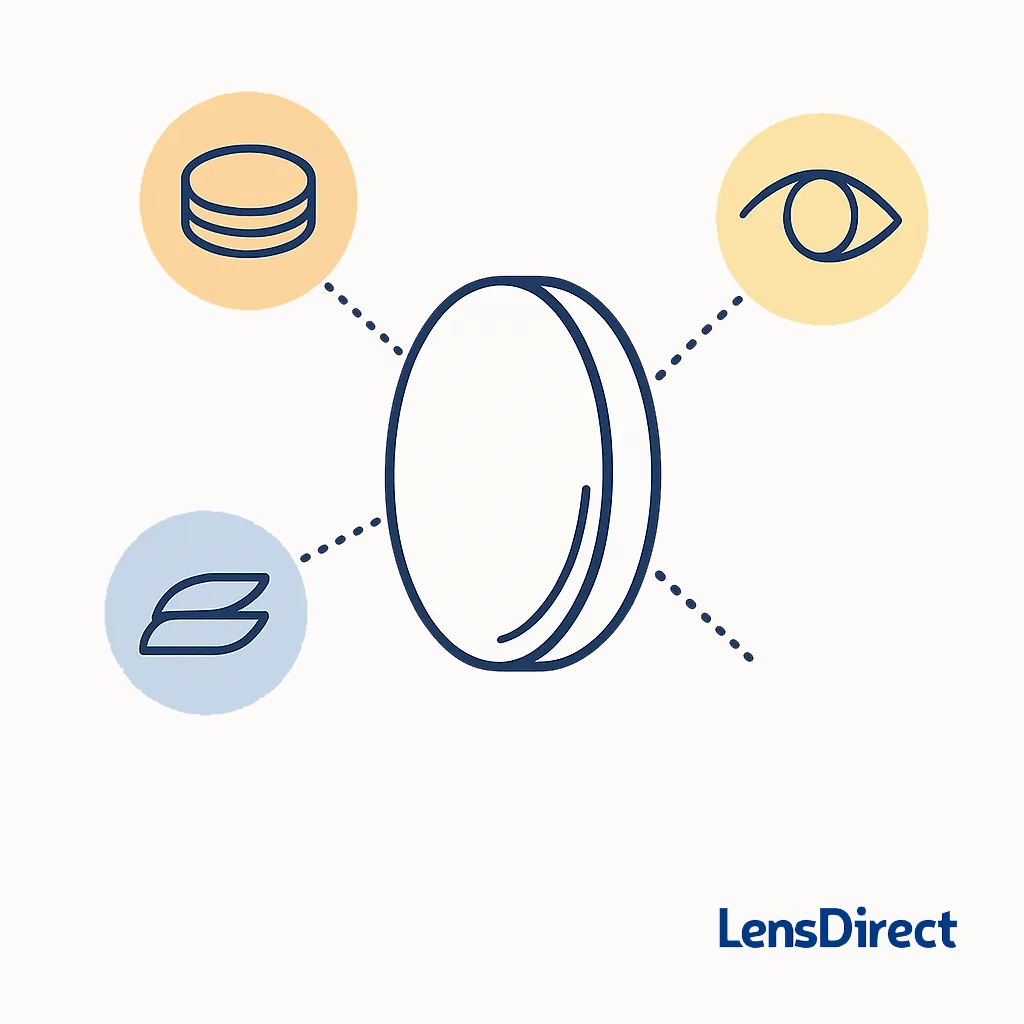
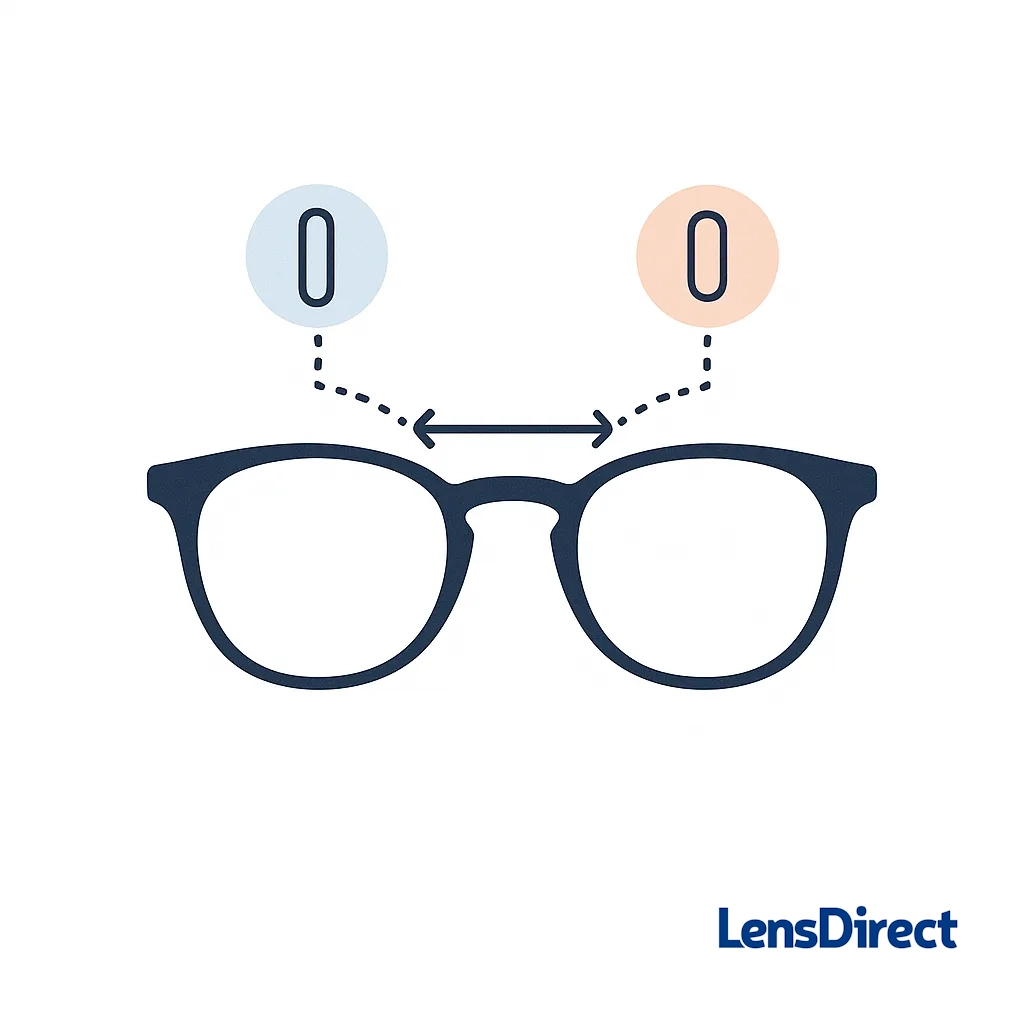
Bridge – The piece between the two lenses that rests on your nose. Its width determines fit and comfort.
Nose pads – Soft pads that sit on your nose to distribute weight and prevent slipping.
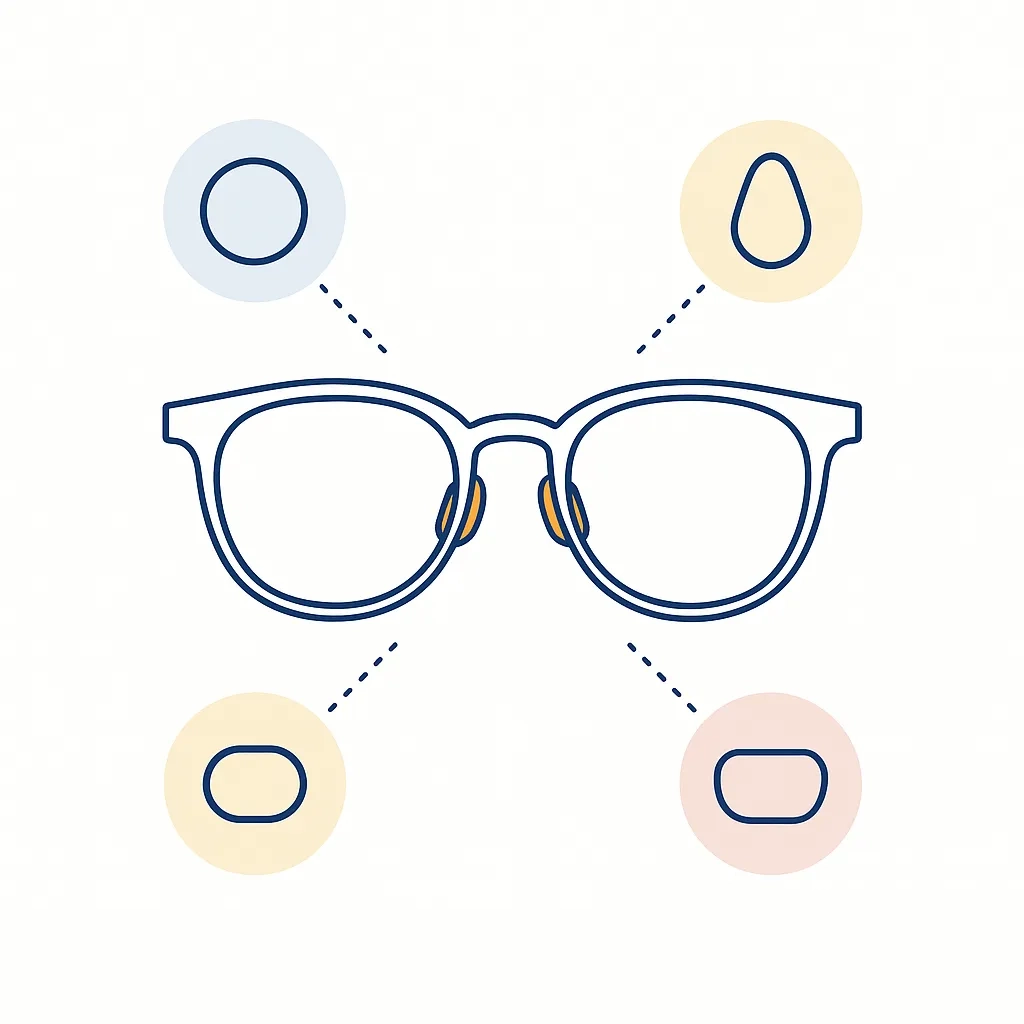
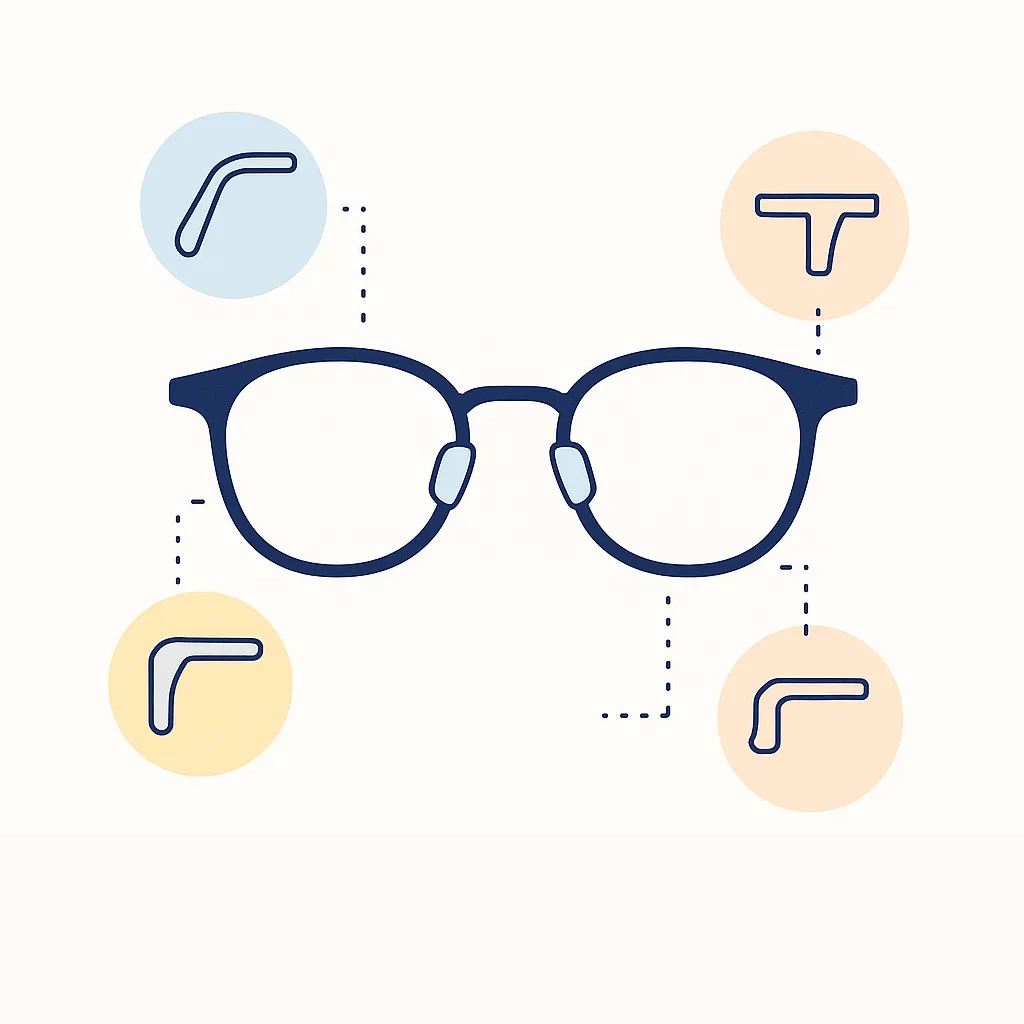
End pieces – Small extensions at the outer corners that connect the rims to the temples.
Pad arms – Small arms that connect nose pads to the frame.
Hinges – Joints that allow the temples to fold inward and open smoothly. Hinges are held together by tiny screws.
Screws – Fasteners that secure hinges and sometimes nose pads.
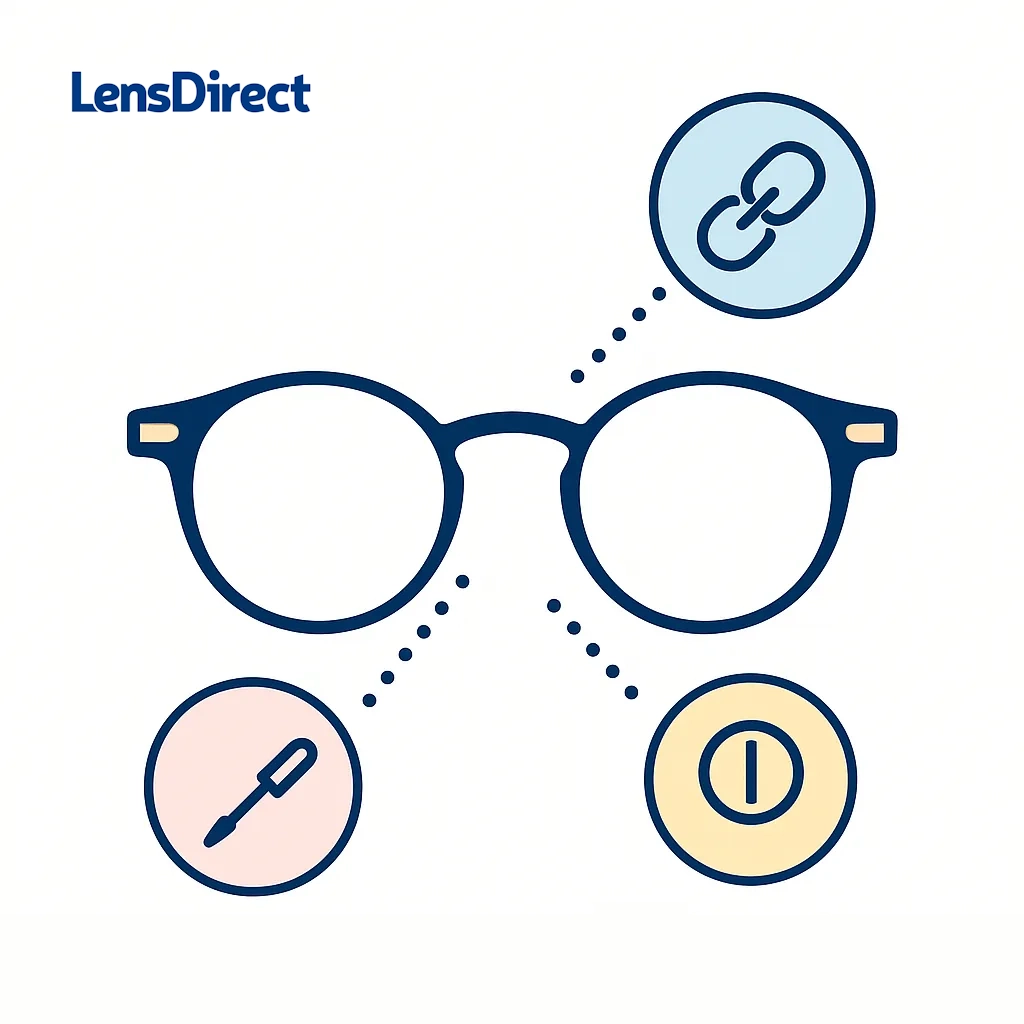
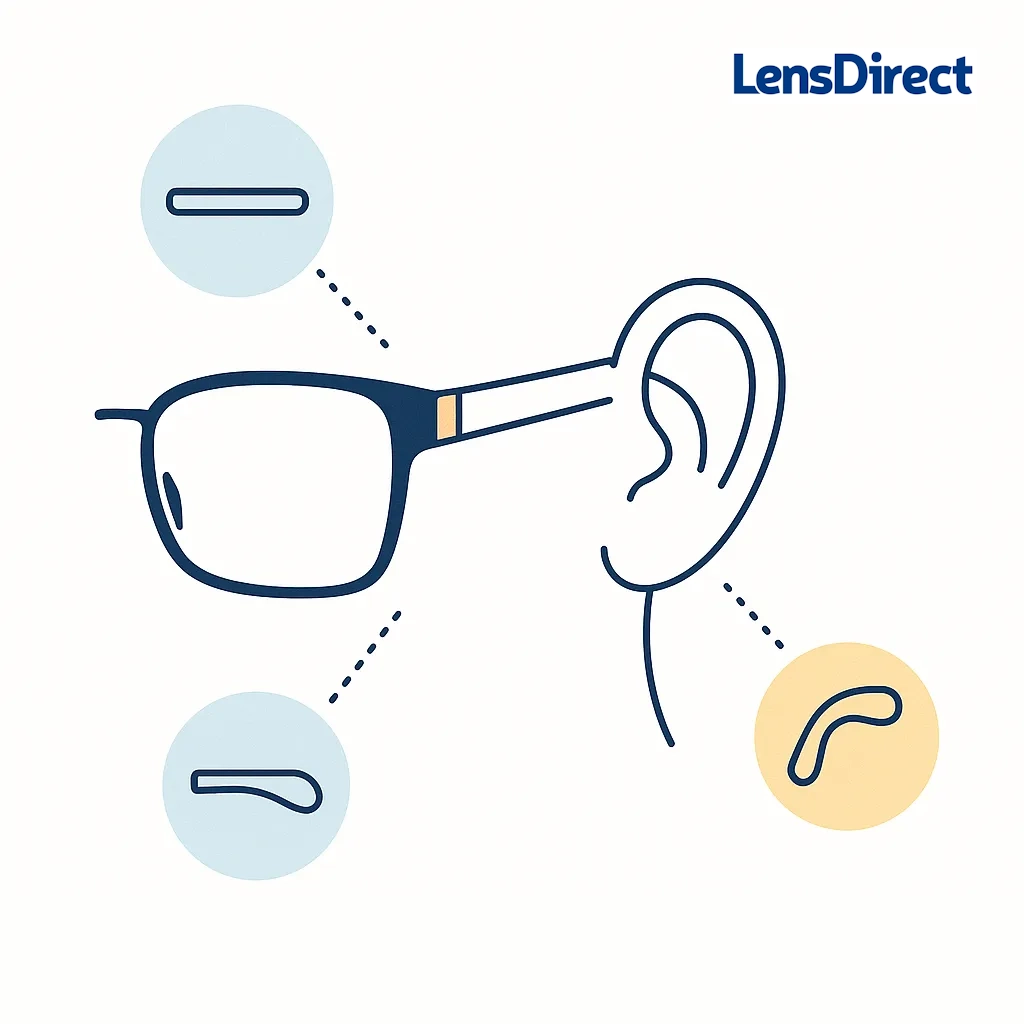
Temples (arms) – Long pieces that go over or behind your ears, holding the glasses in place. They often include temple tips or ear pieces, which provide comfort behind your ears.
Knowing the function of each part sets the stage for understanding the materials used in eyeglasses. Next we’ll explore what these parts are made of and how different materials influence durability, weight, style and comfort.
What Are Eyeglass Frames Made Of?
Eyeglass frames come in a variety of materials, each with unique properties.
The American Academy of Ophthalmology notes that modern frames are made from many plastics and metals.
Your choice affects everything from durability to weight and allergy considerations.
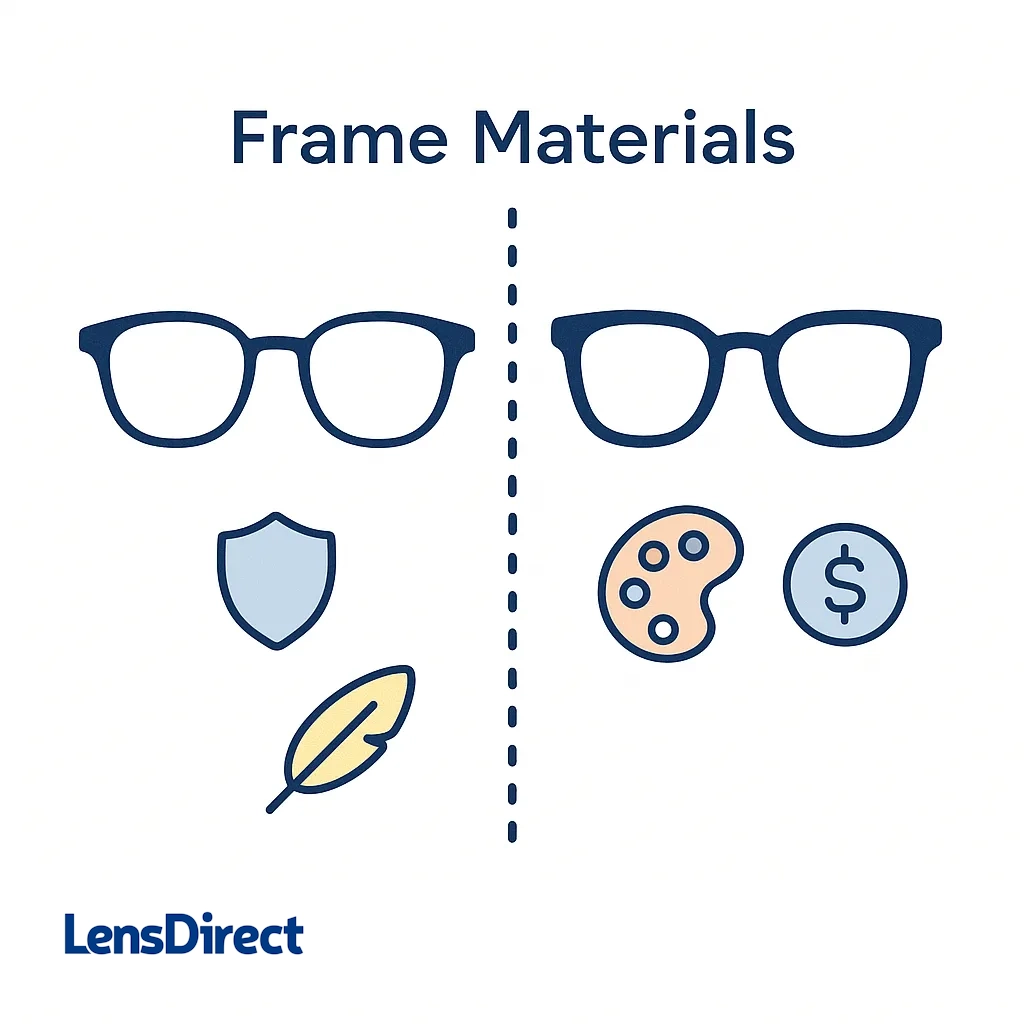
Common Frame Materials
| Material | Key Properties & Pros | Considerations |
| Titanium (metal) | Lightweight, very strong and corrosion‑resistant; hypoallergenic. Comes in various colors. | Higher cost. Can be difficult to adjust without professional help. |
| Monel (metal alloy) | Mix of metals that is flexible and corrosion‑resistant. | May contain nickel; most have coatings to prevent allergic reactions. |
| Beryllium (metal) | Lightweight, strong and flexible; extremely corrosion‑resistant — useful for people around salt water. | Can be more expensive than some plastics. |
| Stainless steel (metal) | Lightweight and strong, more affordable than titanium. | Not as light as titanium; may be less hypoallergenic. |
| Flexon / Memory metal (metal alloy) | Alloy of titanium that bends and returns to shape; lightweight and hypoallergenic. | Costly; limited style variations. |
| Aluminum (metal) | Strong, flexible and corrosion‑resistant. | Often used in premium frames; can be more expensive. |
| Acetate (cellulose acetate) (plastic) | Plant‑based plastic with rich colors and layered patterns; hypoallergenic and lightweight. | Not as adjustable as metal frames; slightly higher cost compared with basic plastics. |
| Zyl (cellulose acetate, “zylonite”) (plastic) | Inexpensive, lightweight and easy to adjust. | Can become brittle with age; color may fade. |
| Cellulose acetate propionate (plastic) | Nylon‑based, hypoallergenic plastic that’s softer than other plastics. | Less rigid; may warp if exposed to heat. |
| Blended nylon (plastic) | Strong and lightweight; great for sports and wraparound styles. | Limited color variety; less adjustable. |
| Optyl (plastic resin) | Malleable when heated, allowing custom molding. | Stiffer when cool; fewer color options. |
| Specialty materials (wood, horn, carbon fiber) | Unique aesthetic and artisanal feel; often handcrafted. | Require special care; may not be vegan‑friendly. |
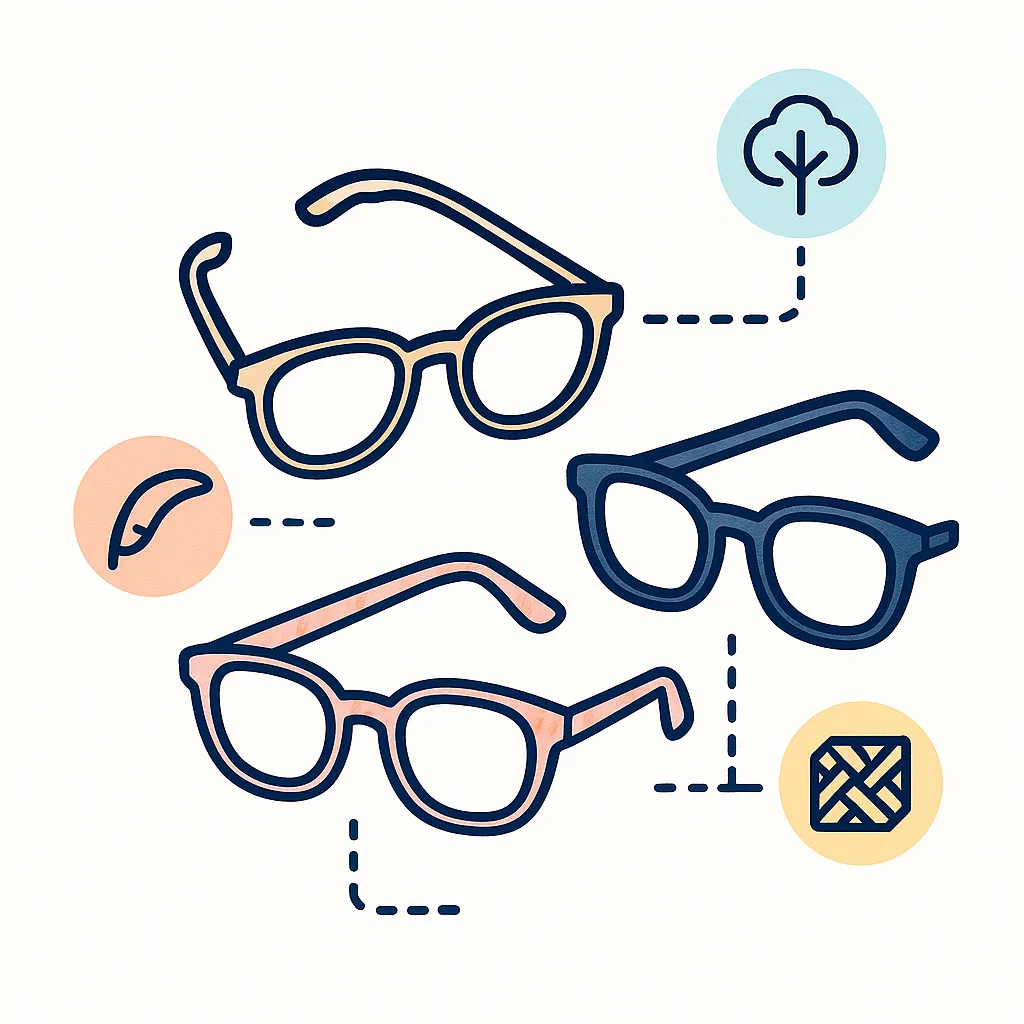
Choosing the Right Frame Material
Consider your lifestyle. Active people might prefer flexible, corrosion‑resistant metals like Flexon or titanium.
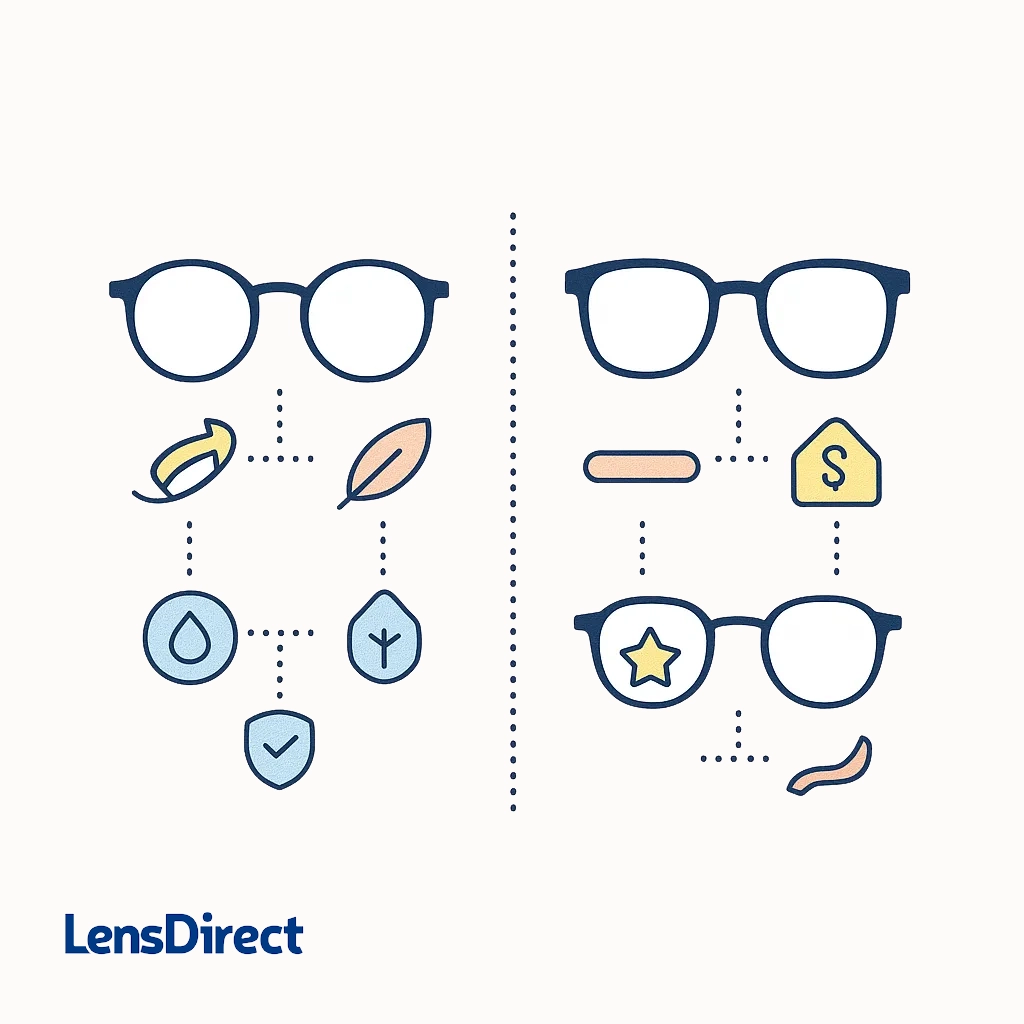
Fashion‑forward wearers may gravitate toward acetate for its rich patterns.
If allergies are a concern, hypoallergenic materials such as titanium or acetate are smart options.
To find the perfect balance of comfort and style, visit LensDirect’s frame collection and filter by material.
Once you’ve selected a frame, the next critical choice is lens material. Lenses affect weight, thickness, impact resistance and price. Let’s explore the differences so you can make an informed decision.
Understanding Eyeglass Lens Materials
Lenses can be made from several materials, each suited to different prescriptions and lifestyles. All About Vision notes that when selecting lens materials, you should consider weight, impact resistance, scratch resistance, thickness, UV protection and cost.
Popular Lens Materials
- Plastic (CR‑39) – A lightweight, durable plastic widely used since the 1970s. It’s affordable and offers good optical quality but can be thicker for strong prescriptions.
- Polycarbonate – Thinner and lighter than standard plastic; it provides UV protection and exceptional impact resistance. However, polycarbonate scratches more easily and can be more expensive.
- High‑index plastic or glass – Bends light more efficiently than regular plastic, making lenses thinner and lighter. Ideal for people with strong prescriptions. High‑index lenses cost more and can be brittle.
- Trivex – A modern lens material that’s lighter than polycarbonate and CR‑39; it’s impact‑resistant and blocks 100% of UV rays. Trivex is more expensive than plastic or polycarbonate.
- Crown glass – Once the standard lens material; it offers excellent scratch resistance and clarity but is heavy and can shatter. Glass does not inherently block UV rays.

Comparing Lens Materials
| Lens Material | Weight | Impact Resistance | Thickness | UV Protection | Cost Considerations |
| Plastic (CR‑39) | Moderate | Good | Thickest for high prescriptions | Usually requires coating | Most affordable |
| Polycarbonate | Light | Excellent | Thin | Built‑in UV protection | Moderate–high |
| High‑index plastic | Very light | Less impact resistant than polycarbonate | Thin | Often includes UV coating | Higher cost |
| Trivex | Very light | High impact resistance | Thin | Blocks 100% UV | Higher cost |
| Glass (crown glass) | Heavy | Brittle, prone to shatter | Thin | No built‑in UV; needs coating | Varies (often used in specialty eyewear) |
Choosing quality materials is only the first step. Proper maintenance can extend the life of your eyewear. The next section provides guidelines for daily care, cleaning techniques and storage to keep your frames and lenses performing their best.
Caring for Your Eyeglasses: Maintenance Tips
Daily Maintenance
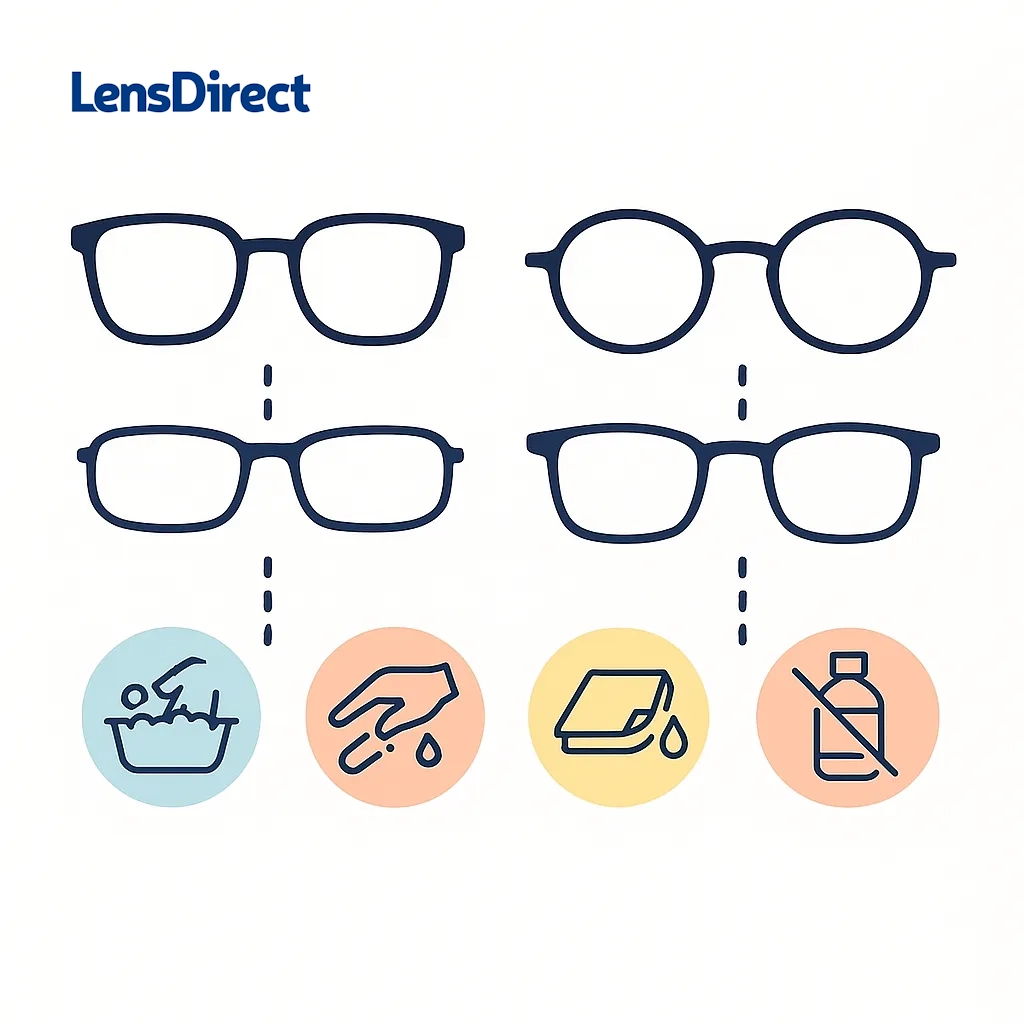
Regular upkeep prevents common issues such as loose screws, misalignment or premature wear.
Dr. Sophia Moh suggests daily checks to ensure screws are tight and frames sit correctly.
Handle glasses by the bridge to avoid putting stress on the temples.
Key maintenance practices:
- Check screws and hinges – Use a glasses repair kit to tighten loose screws.
- Proper storage – Keep glasses in a hard case when not in use.
- Avoid heat – High temperatures can warp frames; don’t leave glasses on car dashboards or wear them on top of your head.
- Use both hands – When removing your glasses, grasp both sides to maintain the frame’s shape.
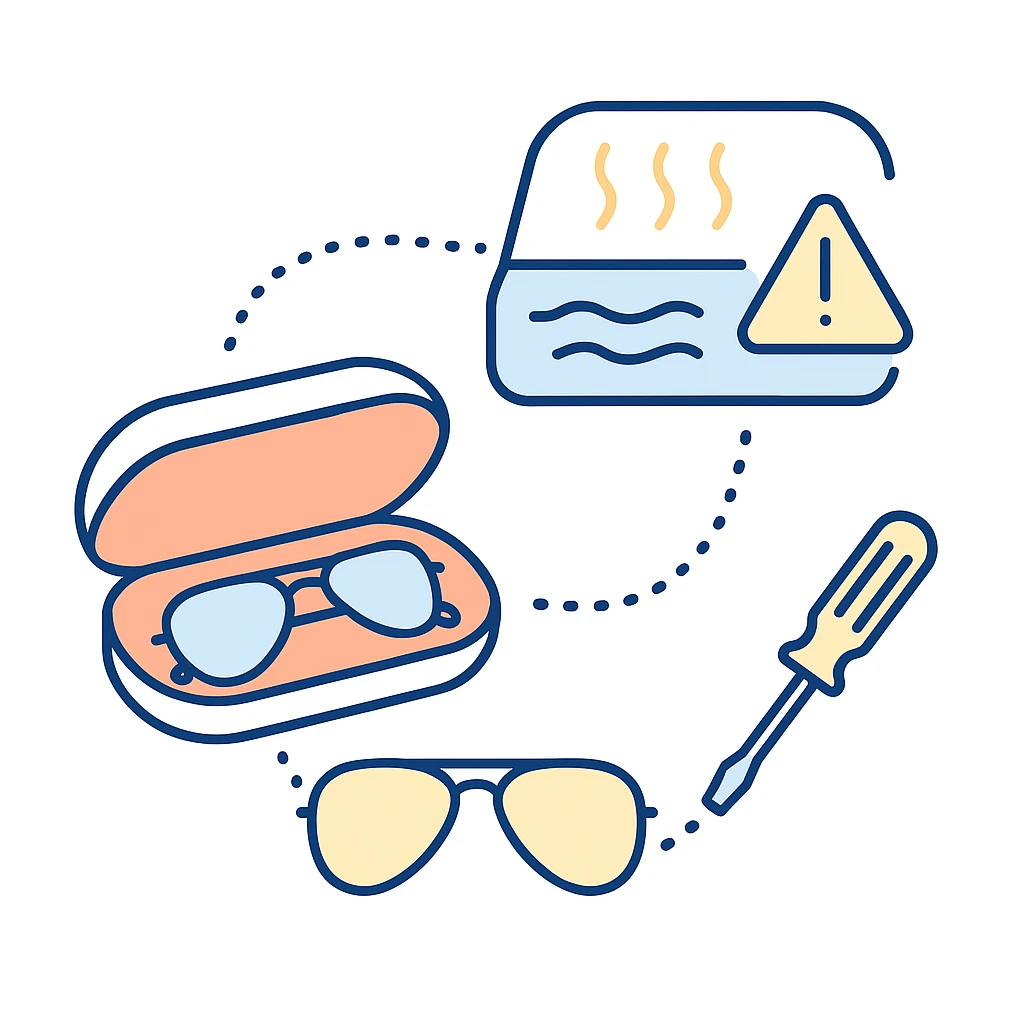
Cleaning Technique
Proper cleaning maintains clarity and protects lens coatings.
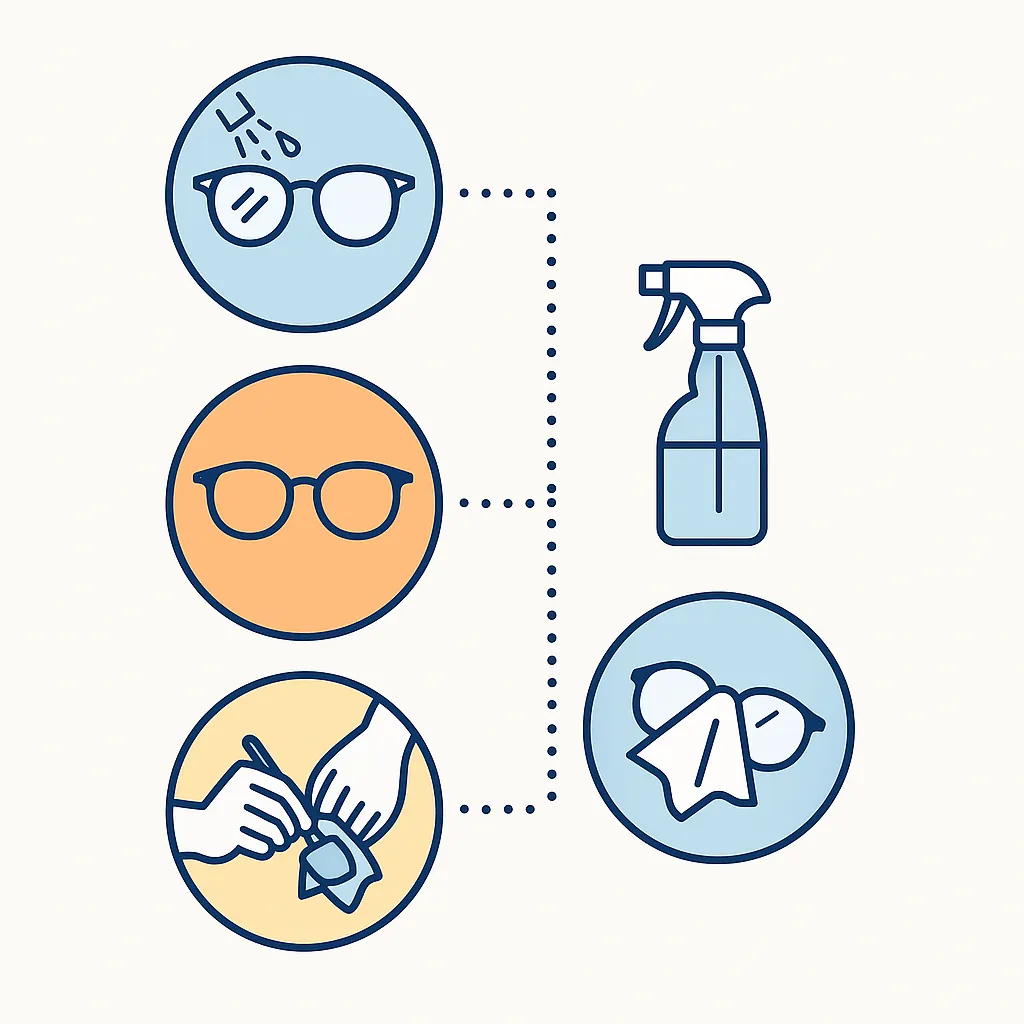
- Rinse – Start by rinsing your glasses with clean water to remove particles that could scratch lenses.
- Cleanse – Use an approved lens cleaner; avoid household cleaners, which may damage coatings.
- Gently rub – With clean fingers and a microfiber cloth, clean lenses, frames and nose pads.
- Dry – Wipe until lenses are dry. Never use shirt tails, paper towels or tissues, which can scratch lenses.
For frames with special coatings (e.g., anti‑reflective), follow the manufacturer’s recommendations and avoid harsh chemicals.
Special Care for Different Frame Materials
Different frame materials require tailored maintenance. Here are a few specific tips for each type:
- Plastic frames – Clean with mild soap and water; avoid harsh chemicals or abrasive materials. Store in a protective case.
- Metal frames – Use a soft cloth and gentle cleaning solution; pay extra attention to nose pads and temple tips. Avoid extended exposure to water to prevent corrosion.
- Titanium frames – Clean with a non‑abrasive cloth and mild soap; dry thoroughly to prevent water spots.
- Stainless steel frames – Wipe with a microfiber cloth and avoid harsh chemicals. Remove dirt around hinges and nose pads.
- Acetate frames – Clean with a soft cloth and mild soap; avoid alcohol‑based cleaners or solvents. Store in a cool, dry place away from sunlight to prevent warping.

Even with meticulous care, parts may loosen, break or wear out. Understanding which parts can be repaired or replaced will help you avoid unnecessary replacements and save money. In the next section, we’ll discuss common issues and repair options.
Repairing or Replacing Eyeglass Parts
DIY Fixes vs. Professional Help
When glasses break, evaluate the damage to determine whether a quick fix is possible or whether professional help is needed.
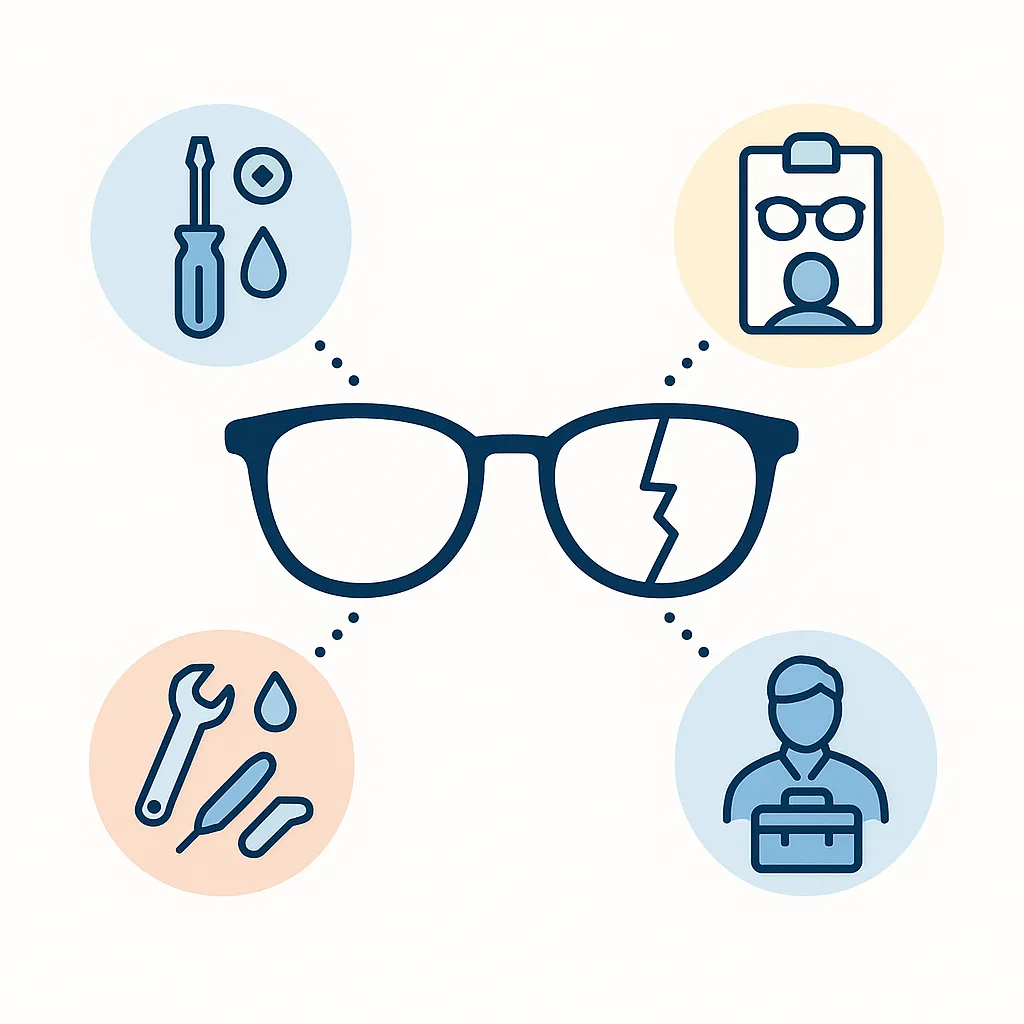
First, identify which part is broken — loosely fastened screws, bent arms, or cracked frames.
Many simple adjustments (like tightening a hinge screw) can be done at home with a repair kit.
However, complex repairs should be handled by an optician.
Common Repairable Parts
- Hinges and screws – If a hinge or screw loosens, a repair kit with a tiny screwdriver and replacement screws can tighten or replace them.
- Nose pads – Worn or damaged nose pads can be swapped out easily with spares in most kits. Many metal frames have adjustable pad arms; new pads snap or screw into place.
- Temple tips – Silicone or plastic tips at the ends of temples can be replaced when they wear out, improving comfort.
- Small adjustments – Slightly bent metal frames may be gently straightened; apply light pressure, being careful not to snap the frame.
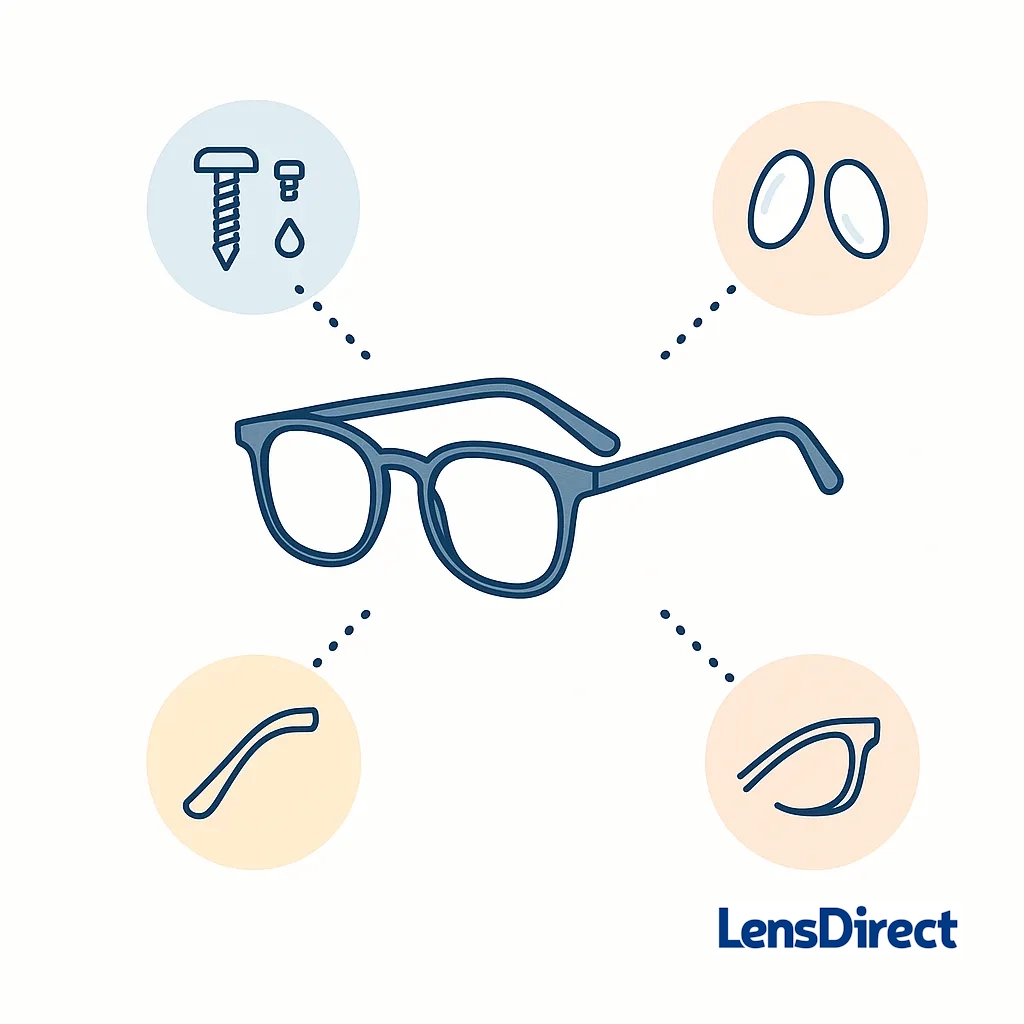
When to Seek Professional Repair
Certain issues should be left to professionals:
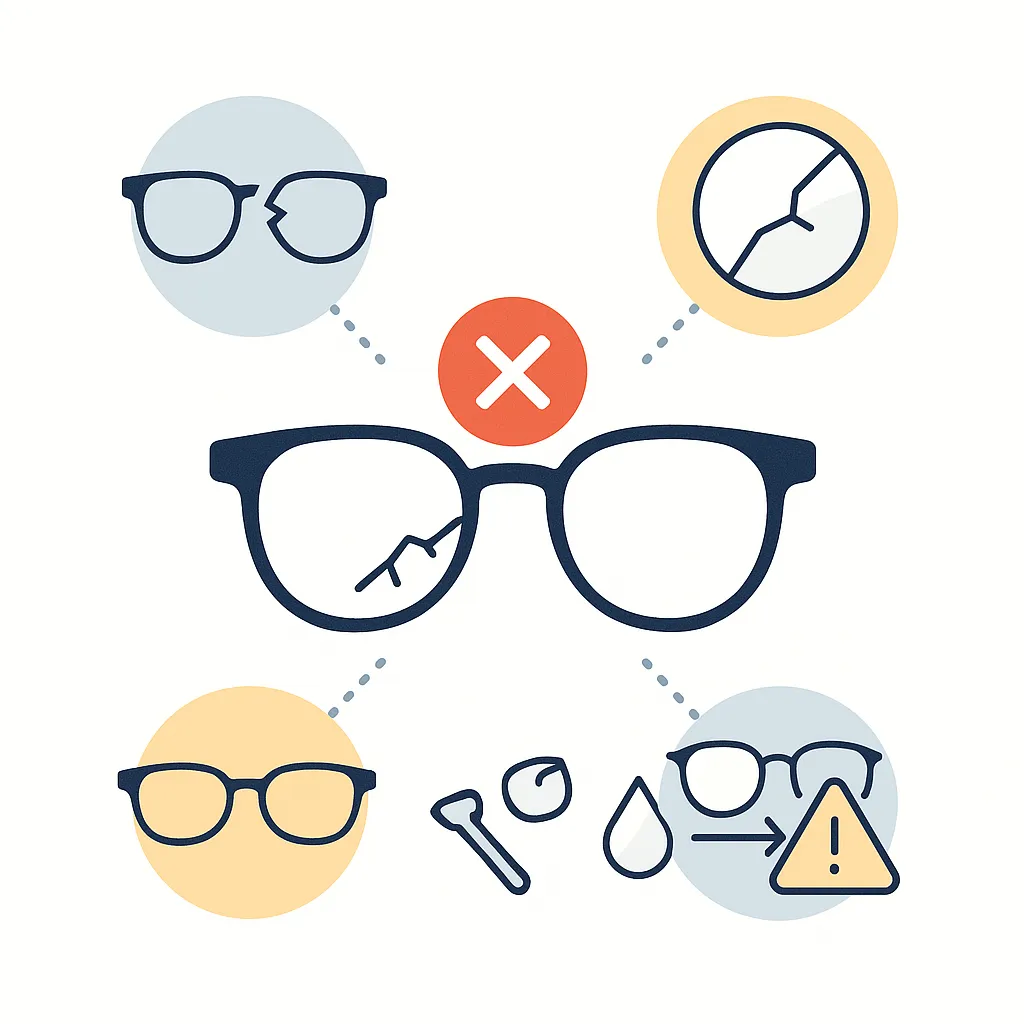
- Broken metal or acetate frames – Do not attempt to glue or solder broken frames yourself. Heat can damage lenses, and adhesives don’t provide long‑term stability.
- Deep scratches or cracked lenses – Scratches can compromise clarity and coatings; replacement is usually necessary.
- Severely bent or warped frames – Opticians have specialized tools to adjust frames without damaging them, particularly for titanium or acetate frames that require heating.
- Reusing lenses in new frames – Although lenses might fit similar frames, reusing them may alter the optical center and cause eye strain.
Cost Considerations
Minor repairs such as tightening screws or replacing nose pads are inexpensive. Simple eyeglass repairs often cost under $50. Replacing lenses or broken frames is more expensive and depends on lens type, coatings and insurance coverage.
Preventing Breakage
Prevention saves money and frustration.
We recommend using a protective case, removing glasses gently with both hands, avoiding placing glasses in pockets or bags, and checking your seat before sitting down.
Simple habits go a long way toward preserving your eyewear.
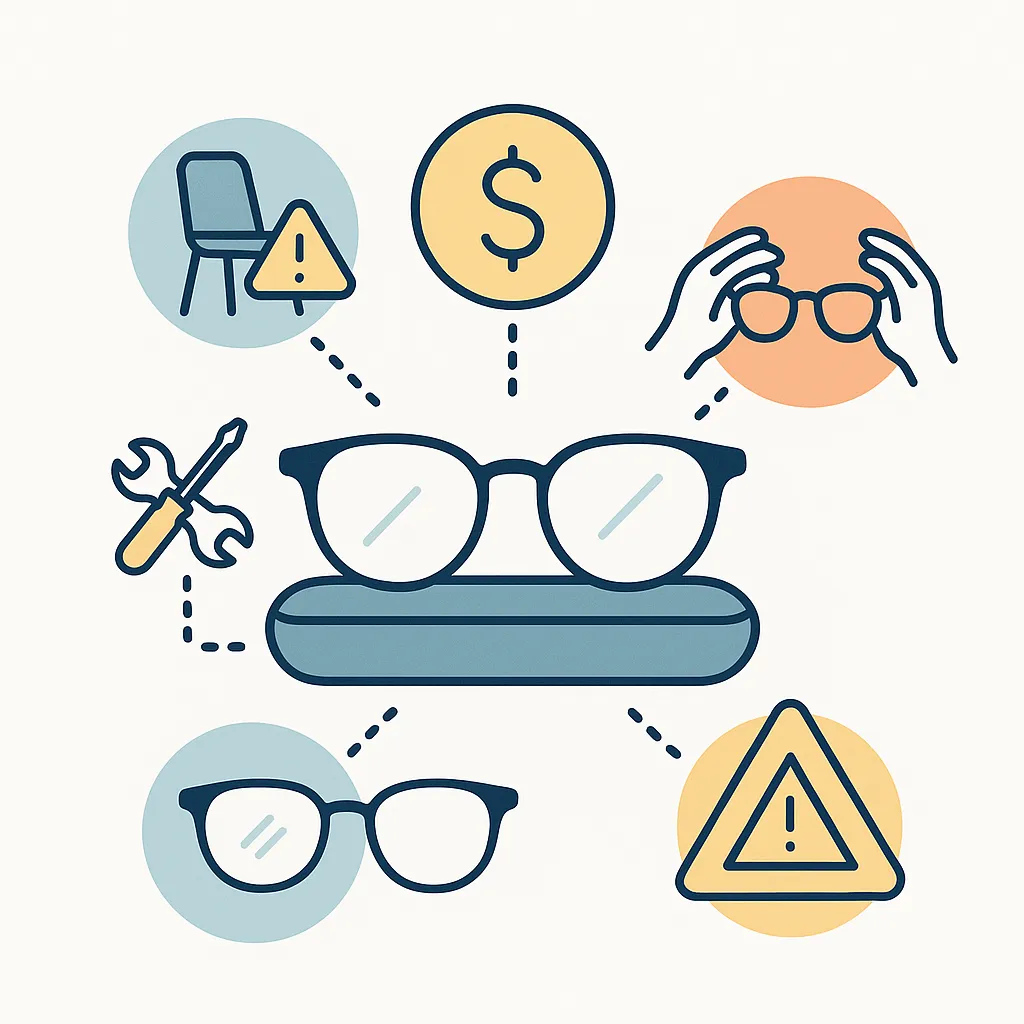
Understanding which parts can be repaired or replaced empowers you to act promptly when something goes wrong. To wrap up, we’ll recap key takeaways and encourage you to put your new knowledge into practice.
Invest in Knowledge for Longer‑Lasting Glasses
Eyeglasses may appear straightforward, but their anatomy reveals a blend of engineering, materials science and style. The nine essential parts — from rims and bridges to hinges and temples — work together to deliver clear vision. Choosing the right frame material can affect weight, flexibility, durability and comfort. Likewise, selecting lens materials influences thickness, impact resistance and cost.

Proper maintenance — daily checks, gentle cleaning and mindful storage — extends the life of your eyewear.
When issues arise, minor repairs like tightening screws or replacing nose pads can often be done at home with a repair kit.
For more serious problems, consult an optician to avoid exacerbating damage.
By understanding the anatomy of your glasses, you’ll be better prepared to care for them, describe any issues to professionals and make informed decisions when shopping for your next pair. At LensDirect, we’re committed to helping you find the perfect frames and lenses, and equipping you with knowledge to enjoy them for years to come.
Subscribe to our email newsletter to get the latest posts delivered right to your email.

